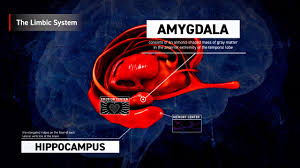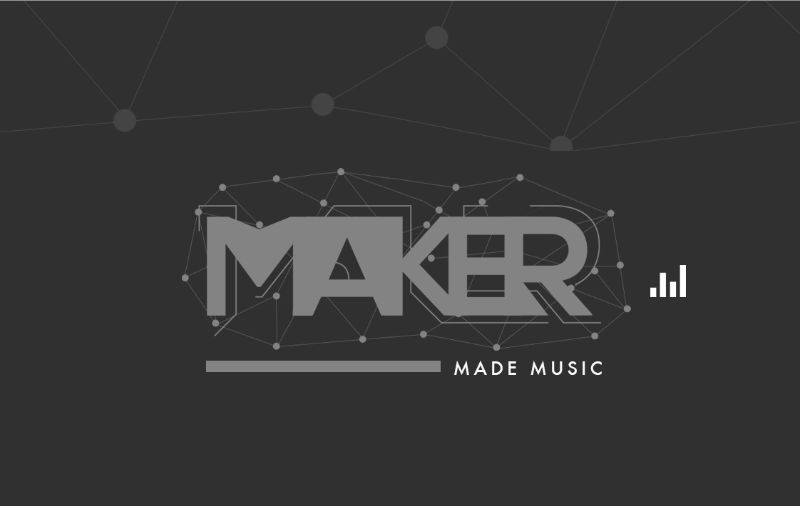In today’s fast-paced world, where advertisements compete for fleeting attention, the emotional resonance of a brand can make all the difference.
Enter the art of music curation in advertising campaigns—a powerful tool that can evoke memories, spark joy, and connect consumers to a brand on a deeper level.
The melodies we hear in ads don’t just fill silence; they are carefully selected soundtracks that help tell a brand’s story, captivate audiences, and inspire action.
From the uplifting beats that accompany a feel-good commercial to the nostalgic tunes that remind us of simpler times, music has a unique ability to unlock consumer emotions.
Join us as we explore how strategic music curation is redefining the landscape of advertising and transforming the way brands engage with their audiences, creating unforgettable experiences that linger well beyond the final note.
Discover the synergy between sound and sentiment, and unlock the potential of music to enhance your advertising strategy.
The Psychological Impact of Music on Consumer Behavior
Music has a profound psychological impact on human behavior, influencing emotions, perceptions, and even decision-making processes. When it comes to advertising, leveraging these psychological effects can be a game-changer.
For instance, upbeat music can elevate moods and create a sense of excitement, which in turn can make a product or service more appealing.
Conversely, slower, more somber tunes can evoke feelings of nostalgia or introspection, encouraging deeper connections with a brand. This emotional engagement is key to capturing attention and fostering brand loyalty.
Neuroscientific research reveals that music activates various areas of the brain associated with emotion, memory, and even physical responses.

The limbic system, which is responsible for emotional processing, responds to music in ways that can significantly alter a person’s mood and perception. This is why advertisers carefully select music that aligns with the emotional tone they wish to convey.
For example, a car advertisement might use fast-paced, high-energy music to create a sense of adventure and freedom, while a sentimental family commercial might feature soft, melodic tunes to evoke warmth and love.
Moreover, music can influence consumer behavior by affecting their perception of time and space. In retail environments, for example, the right background music can make waiting times feel shorter and enhance the overall shopping experience.
This principle extends to advertising as well; a well-chosen soundtrack can make a commercial more engaging, encouraging viewers to stay tuned rather than skip ahead. This ability to hold attention is crucial in a media landscape saturated with competing messages.
Case Studies: Successful Advertising Campaigns Using Music
Several iconic advertising campaigns have demonstrated the power of music curation in creating memorable and impactful brand experiences.
Coca Cola

One notable example is Coca-Cola’s “Share a Coke” campaign, which featured the song “I’d Like to Buy the World a Coke.” This campaign leveraged the nostalgic and unifying qualities of the song to create a sense of global community and shared happiness.
The music not only complemented the campaign’s message but also became synonymous with the brand itself, reinforcing Coca-Cola’s identity as a symbol of joy and togetherness.
Apple

Another successful case is Apple’s use of music in its iPod and iPhone commercials. Apple strategically selected catchy, upbeat songs that resonated with a broad audience, helping to establish the brand’s image as innovative and youthful.
Tracks like “Are You Gonna Be My Girl” by Jet and “1234” by Feist became instant hits, not just because of their catchy tunes but also because they were associated with Apple’s cutting-edge technology.
This seamless integration of music and product created an emotional connection that went beyond mere consumer interest, fostering a sense of belonging and excitement.
Old Spice

Old Spice’s “The Man Your Man Could Smell Like” campaign is another excellent example. The campaign’s humorous and quirky approach was complemented by a distinctive jingle that reinforced the brand’s playful identity.
The memorable tune, combined with the charismatic delivery of the ads, created a cultural phenomenon that boosted brand recognition and sales.
This case illustrates how music can enhance the overall impact of an advertising campaign by making it more memorable and engaging.
The Role of Genre and Tempo in Emotional Engagement
Genre
The genre and tempo of music play significant roles in determining the emotional engagement of an audience. Different genres evoke different emotional responses, making them suitable for various types of advertisements.
For instance, classical music is often associated with elegance and sophistication, making it ideal for luxury brands aiming to convey a sense of exclusivity.
On the other hand, pop music, with its catchy melodies and upbeat rhythms, can infuse ads with energy and a sense of fun, making it perfect for lifestyle and consumer goods brands.
Tempo
Tempo, or the speed of the music, also has a substantial impact on how an advertisement is perceived. Fast-tempo music generally increases arousal and excitement, making it suitable for commercials that aim to energize and motivate the audience.
This is why sports brands and automotive companies often use high-tempo tracks to create a dynamic and thrilling atmosphere.
Conversely, slow-tempo music can induce relaxation and calm, making it effective for ads promoting products related to wellness, relaxation, and comfort.
Moreover, the combination of genre and tempo can be strategically used to create a specific mood or atmosphere that aligns with the brand’s message.
For example, a travel advertisement might use a combination of folk music and a moderate tempo to evoke feelings of adventure and exploration.
Similarly, a tech company might opt for electronic music with a fast tempo to convey innovation and forward-thinking. By carefully selecting the genre and tempo, advertisers can enhance the emotional resonance of their campaigns, making them more impactful and memorable.
How to Choose the Right Music for Your Brand
Choosing the right music for your brand involves more than just picking a popular song or a catchy tune. It requires a deep understanding of your brand’s identity, values, and the emotions you want to evoke in your audience.
Core Message Emotional Response
Start by defining the core message of your campaign and the emotional response you aim to elicit.
Are you looking to inspire joy, nostalgia, excitement, or trust? Once you have a clear emotional direction, you can begin to explore musical options that align with these goals.
Target Audience Musical Preferences
Different demographics may respond differently to various genres and styles of music. For instance, younger audiences may prefer contemporary pop or electronic music, while older demographics might resonate more with classic rock or jazz.
Conducting audience research can provide valuable insights into the types of music that will most effectively engage your audience and enhance your campaign’s impact.
Culture & Contextual Relevance
It’s also important to think about the cultural and contextual relevance of the music you choose. Music that resonates in one cultural context may not have the same impact in another.
Ensure that the music aligns with the cultural background and values of your target audience.
Additionally, consider the context in which your advertisement will be viewed. A high-energy track might work well for a television commercial but could be overwhelming in a digital ad that viewers encounter on their phones.
Originality
Finally, don’t overlook the importance of originality. While using popular tracks can be effective, creating original music tailored specifically to your brand can set you apart from competitors.
Original compositions allow for greater flexibility in aligning the music perfectly with your brand’s message and aesthetic.
Collaborating with musicians or composers can result in a unique sound that becomes synonymous with your brand, enhancing recognition and recall.
The Science Behind Music and Memory Recall
The connection between music and memory is a well-documented phenomenon, rooted in the brain’s intricate processing of auditory stimuli.
When we listen to music, our brains engage in a complex series of functions that involve the auditory cortex, the limbic system, and the hippocampus, which is crucial for memory formation.

This neural activity explains why certain songs can trigger vivid memories and emotions, a phenomenon known as the “reminiscence bump,” where music from our youth often evokes the strongest memories.
In advertising, leveraging the science behind music and memory recall can significantly enhance brand recognition and retention. When a particular piece of music is repeatedly associated with a brand, it becomes a powerful mnemonic device.
This is why jingles and catchy tunes are so effective; they create a strong, repetitive association with the brand, making it easier for consumers to remember.
For example, the “I’m Lovin’ It” jingle by McDonald’s has become instantly recognizable, embedding the brand’s message in the minds of consumers worldwide.
Furthermore, music’s ability to evoke emotional memories can deepen the consumer’s connection to a brand. When an ad uses a song that resonates emotionally with the audience, it can trigger personal memories that enhance the overall impact of the advertisement.
This emotional resonance not only makes the ad more memorable but also fosters a sense of personal connection to the brand.
For instance, a car commercial featuring a nostalgic song from the 80s might evoke fond memories of youth and freedom, creating a positive association with the brand.
The strategic use of music in advertising taps into the brain’s natural propensity for pattern recognition and emotional processing.
By aligning the auditory elements of an ad with the desired emotional and cognitive outcomes, advertisers can create more engaging and memorable experiences.
This scientific understanding of how music influences memory and emotion underscores the importance of thoughtful music curation in crafting effective advertising campaigns.
Music Licensing: Navigating Legal Considerations
While the right music can elevate an advertising campaign, it’s crucial to navigate the legal considerations of music licensing to avoid potential pitfalls.
Music licensing involves obtaining permission from the copyright holders to use their music in your advertisements. This process can be complex, as it often requires negotiations with multiple parties, including songwriters, performers, record labels, and music publishers.
There are several types of music licenses that advertisers may need to secure, depending on the intended use of the music.
Synchronization License
A synchronization license is required to pair music with visual media, such as in a television commercial or online video. This license is typically obtained from the music publisher.
Master Use License
Additionally, a master use license is needed if you’re using a specific recording of a song, which is obtained from the record label. If you’re planning to perform or adapt a song, a performance or adaptation license may also be necessary.
The cost of music licensing can vary widely, depending on factors such as the popularity of the song, the duration of its use, and the scope of the campaign.
Popular tracks by well-known artists can command high fees, while lesser-known or independent music may be more affordable. It’s important to budget for these costs early in the campaign planning process to avoid any surprises.
Negotiating Music Licenses
Negotiating music licenses requires a clear understanding of your campaign’s needs and the specifics of the music rights involved.
Working with a music licensing professional or attorney can help ensure that you obtain the necessary permissions and avoid legal complications.
They can also assist in negotiating favorable terms and exploring alternative options, such as commissioning original music, which can offer greater flexibility and control over the final product.
Integrating Music Curation into Your Marketing Strategy
Integrating music curation into your marketing strategy involves more than just adding a soundtrack to your ads.
It requires a holistic approach that considers how music can enhance your brand’s overall narrative and resonate with your target audience.
Define the Role of Music
Start by defining the role of music within your broader marketing goals.
What emotions do you want to evoke? How can music support your brand’s identity and messaging?
Answering these questions will guide your music selection process and ensure alignment with your strategic objectives.
Develop a Cohesive Music Strategy
Next, develop a cohesive music strategy that spans all touchpoints of your marketing efforts.
Consistency is key to building a strong brand identity, so ensure that the music used in your advertisements, social media content, and other marketing materials reflects a unified sound.
This doesn’t mean using the same track repeatedly, but rather maintaining a consistent musical style and tone that aligns with your brand’s personality.
For instance, if your brand is known for its youthful and energetic vibe, opt for music that embodies these qualities across all channels.
Collaboration with Music Professionals
Collaboration with music professionals can add depth and expertise to your music curation efforts. Consider partnering with music supervisors, composers, or agencies that specialize in music for advertising.
These professionals can provide valuable insights into current trends, audience preferences, and the technical aspects of music production.
They can also help you navigate the complexities of music licensing and ensure that your chosen tracks are legally compliant.
Measuring Impact
Finally, measure the impact of your music choices through data and analytics. Track metrics such as audience engagement, brand recall, and emotional response to determine the effectiveness of your music curation.
Use this data to refine your strategy and make informed decisions about future campaigns.
By continuously evaluating and optimizing your music choices, you can enhance the emotional impact of your advertising and strengthen your brand’s connection with consumers.
Future Trends: The Evolution of Music in Advertising
AI
As technology continues to evolve, so too does the role of music in advertising. One emerging trend is the use of artificial intelligence (AI) in music curation and composition.
AI algorithms can analyze vast amounts of musical data to identify patterns and predict which types of music will resonate most with specific audiences.
This technology allows for the creation of personalized soundtracks tailored to individual preferences, enhancing the emotional impact of advertisements. Brands can leverage AI to create dynamic, adaptive music that responds to real-time data and audience interactions.
Immersive Audio Experiences
Another trend is the integration of immersive audio experiences, such as 3D audio and spatial sound. These technologies create a more engaging and realistic auditory experience, making advertisements more impactful.
For example, spatial sound can simulate the sensation of being in a live concert or experiencing a product firsthand, providing a deeper emotional connection.
As virtual and augmented reality become more prevalent, the use of immersive audio will likely become a standard practice in advertising, offering new ways to captivate and engage audiences.
Music Streaming Service Partnerships
The rise of streaming platforms and digital media consumption is also shaping the future of music in advertising.
Brands are increasingly partnering with music streaming services to create branded playlists and sponsored content that align with their marketing campaigns.

This approach allows for seamless integration of music and brand messaging, reaching consumers in their everyday listening habits.
Additionally, the use of data analytics from these platforms can provide insights into listener preferences and behavior, informing more targeted and effective music curation strategies.
Finally, the growing emphasis on social and cultural relevance is influencing the types of music used in advertising. Brands are recognizing the importance of inclusivity and representation in their music choices, selecting tracks that reflect diverse voices and perspectives.
This trend not only enhances the emotional resonance of advertisements but also aligns brands with broader social values, fostering deeper connections with consumers.
As the cultural landscape continues to evolve, staying attuned to these trends will be essential for brands seeking to harness the full potential of music in their advertising efforts.
Conclusion: Harnessing the Emotional Power of Music in Ads
The power of music to evoke emotions and create lasting memories is undeniable, making it a vital tool in the world of advertising.
Through strategic music curation, brands can elevate their campaigns, forge deeper connections with their audiences, and stand out in a crowded marketplace.
By understanding the psychological impact of music, examining successful case studies, and considering factors such as genre, tempo, and cultural relevance, advertisers can select the perfect soundtracks to enhance their brand narratives.
Navigating the complexities of music licensing and integrating music into a cohesive marketing strategy are crucial steps in leveraging music’s full potential.
As technology and consumer preferences continue to evolve, staying ahead of trends such as AI-driven music curation, immersive audio experiences, and cultural inclusivity will be key to creating impactful and memorable advertisements.
By harnessing the emotional power of music, brands can create unforgettable experiences that resonate with consumers long after the final note has played.
In conclusion, the synergy between sound and sentiment offers a unique opportunity for brands to engage with their audiences on a deeper level.
By thoughtfully curating music that aligns with their identity and messaging, brands can unlock consumer emotions, inspire action, and leave a lasting impression.
As the landscape of advertising continues to evolve, the role of music will remain a powerful and transformative force, shaping the way brands connect with the world.

https://shorturl.fm/JvrUa